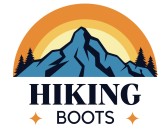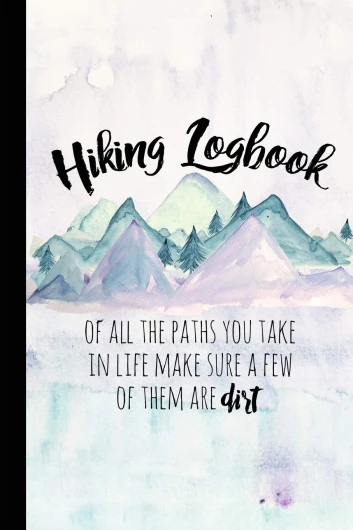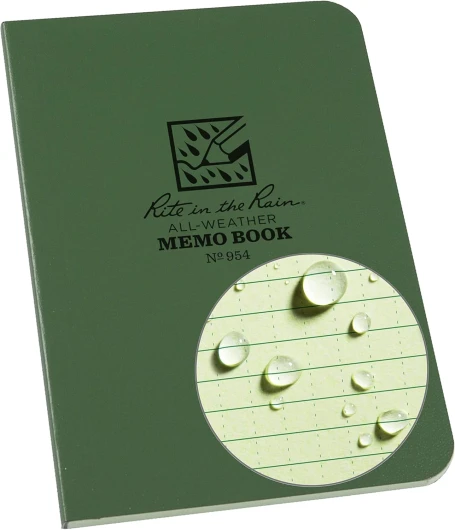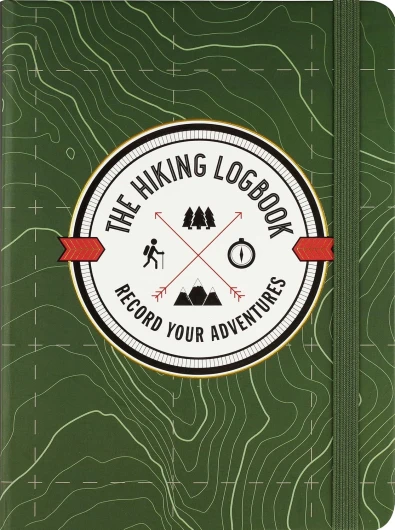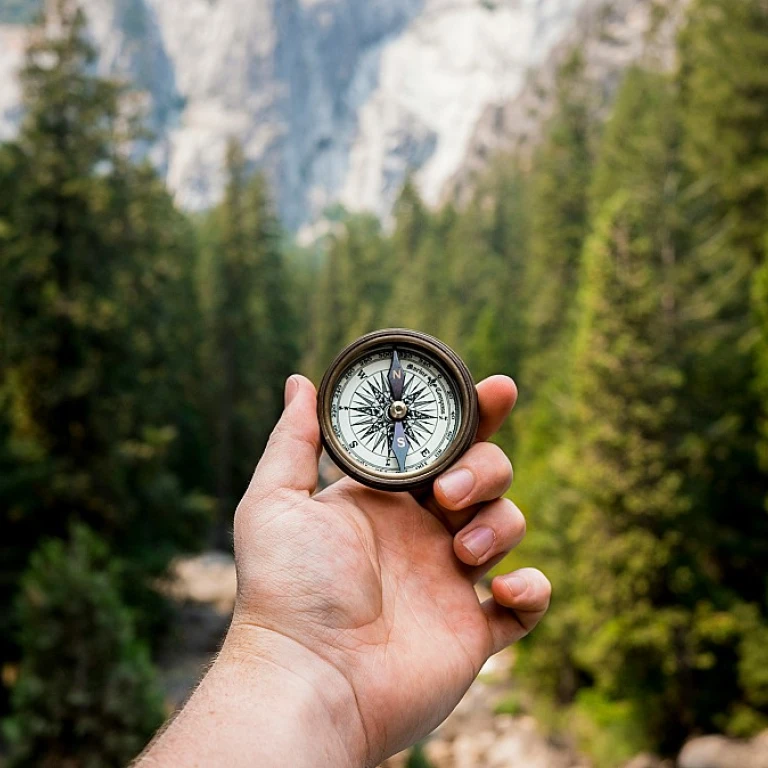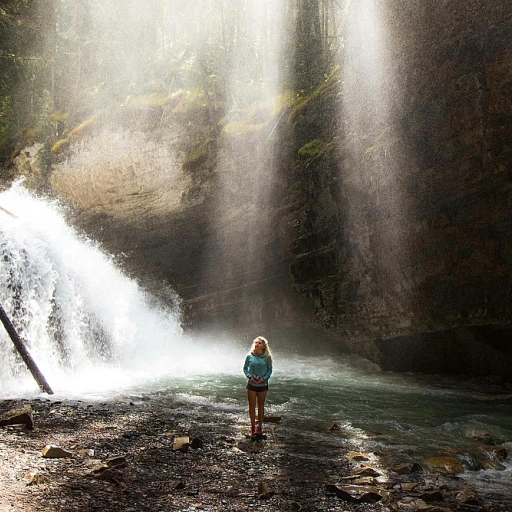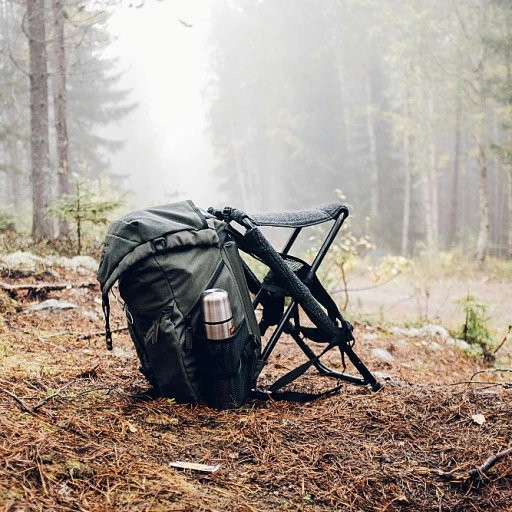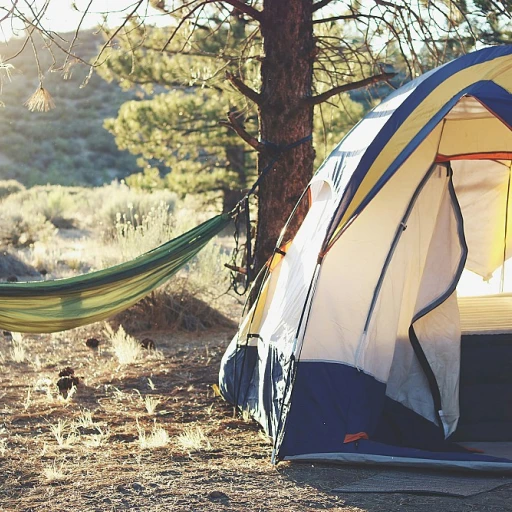
Why keeping a hiking journal is beneficial
Boosting your mental well-being
Keeping a hiking journal isn't just about documenting trails; it's a therapeutic exercise that boosts mental health. According to a 2019 study by the American Psychological Association, journaling can reduce symptoms of depression and anxiety by up to 27%. Imagine, capturing your thoughts after a hike, with all that endorphin rush; it's a unique way to reflect and feel grounded.
Tracking your progress and achievements
When you write down your hikes, you track your progress over time. For instance, documenting your adventure on the Appalachian Trail – one of the longest hiking-only footpaths in the world – can help you see how far you've come. Not only does this provide a sense of accomplishment but it also gives you tangible records of your improvement in endurance, distance, and even speed.
Enhancing your memory with vivid details
How often have you tried to recall a hike’s details, only to find them fuzzy? A hiking journal helps in cementing those precious memories. Derek Williams, a seasoned hiker and author of several hiking journals, states, “By jotting down the sights, sounds, and even the scents, you paint a vivid picture in your mind that’s hard to forget.” Check out some inspirational hiking movies that have been adapted from detailed hiking journals to see how powerful recollection can be!
Learning from past hikes
A journal is an excellent resource for learning from your previous mistakes and successes. When planning your next hike on trails like the Pacific Crest Trail or the Colorado Trail, you can reference what gear worked best, weather conditions, and even trail difficulty. Each entry becomes a valuable lesson for future adventures.
Sharing your experiences with others
Hiking journals can serve as a great way to share your experiences with fellow hikers. Platforms like Trail Journals LLC allow hikers to post their entries online. It’s a way to connect and inspire the hiking community, offering firsthand insights and experiences.
Types of hiking journals: digital vs. paper
The battle between digital and paper hiking journals
The choice between digital and paper hiking journals often boils down to personal preference. Each option presents its own set of pros and cons, alluring different kinds of hikers.
Mary Johnson, a seasoned hiker with over two decades of trail experience, swears by her leather-bound notebook. She believes that jotting down notes on paper keeps her more connected to her journey. "When I write in my journal, I'm able to relive my adventure in a way that I can't with my phone," she says.
Paper journals: tangible memories
The tactile satisfaction of writing in a paper journal can't be overstated. This traditional method appeals to those who enjoy the feel of pen on paper. Plus, it's low-tech, meaning no need for batteries or signal. According to a survey by National Geographic, 64% of hikers prefer paper journals for these very reasons.
Examples of great paper journals include Moleskine notebooks and Rite in the Rain, which are favored for their durability and waterproof features.
Digital journals: convenience and backup
On the other hand, digital journals have their own flair. They offer convenience with features like GPS tracking, easy photo embedding, and cloud storage for backup. Derek Williams, who completed the Appalachian Trail, advocates for apps like TrailJournal and Gaia GPS. "Keeping a digital journal made it simple to track my daily progress and incorporate photos immediately," says Williams.
According to a study conducted by the Appalachian Trail Conservancy, 35% of modern-day hikers have begun to integrate digital journaling into their routines, blending traditional note-taking with the power of technology.
Why not both?
There's no hard rule saying you must choose one or the other. Some hikers opt to keep both a digital and a paper journal, each serving a unique purpose. For instance, a digital journal makes it easier to capture coordinates and track progress, while a paper journal offers a reflective space for deeper musings.
As popularity grows, so do the tools available. It's all about finding what works best for your hiking routine. Whether you're traversing the Colorado Trail, recording moments on the Florida Trail, or embarking on the Pacific Crest Trail, a blend of digital and paper can elevate your hiking experience to new heights.
What to include in your hiking journal
Essential details to log for an unforgettable experience
Keeping a hike journal isn't just about jotting down dates and locations; it's about capturing the essence of your journey. To make your hiking journal something you’ll cherish for years, consider including a variety of details.
Starting point and destination: These are basics that set the stage for your story. Whether you're tackling the Appalachian Trail or exploring a local trail, always note where you started and where you ended up. For instance, documenting a hike on the Pacific Crest Trail would include trailheads and notable landmarks along the way.
Weather conditions: The elements can make or break a hike. Noting the weather not only helps you remember the day but also provides useful information for future planning. Was it a sunny day? Did you trudge through the rain? Climbing in the snow on Colorado’s trails? Each weather type brings its own set of challenges and joys.
Trail conditions and terrain: Whether you're traversing the rocky paths of the Mont Blanc Tour or the flat expanses of the Florida Trail, terrain plays a significant role in your experience. Note if the trail was muddy, rocky, sandy, or well-maintained.
Wildlife sightings: Spotting wildlife is often one of the highlights. From deer in Oregon's parks to unique bird species in New Zealand, make sure to jot down any critters you encounter.
Flora observed: Different trails will expose you to various plant life. Keep track of distinctive plants, flowers, or trees you come across. This is particularly fascinating on varied terrains like the Tahoe Rim Trail.
Personal experiences and thoughts: Perhaps the most vital part. How did you feel during the hike? Were there moments of joy, frustration, or awe? Did you hit a mental or physical wall and how did you overcome it? Reflecting on these moments can be one of the most rewarding aspects of keeping a hiking journal.
Special moments: Dedicate some space to cherish moments. Maybe it's the sight of a stunning sunset over the mountains, a quiet moment by a serene lake, or a conversation with a fellow hiker. These make for the heartwarming content of your journal.
Photos and sketches: Adding visual elements like photos or sketches can significantly enhance the documentary part of your journal. It’s covered more in detail in a later section, but a picture truly speaks a thousand words, capturing scenery that words sometimes fail to describe.
Including these elements in your journal will offer a comprehensive snapshot of your hiking experiences, making each entry a vivid recount of your adventures on trails, whether it’s the Appalachian Trail or the quiet paths of local parks.
Expert insights on keeping a hiking journal
Insights from seasoned hikers
Veteran hikers who've spent countless days and nights on mountain trails and in rough, wooded terrains swear by the practice of maintaining a hiking journal. Derek Williams, an expert hiker known for his extensive journeys along the Appalachian Trail, says, "Documenting my hikes has changed the way I experience the trail. Not only does it help me keep track of routes and conditions, but it also provides a rich tapestry of memories that I can revisit."
Williams isn't alone. Many hikers believe that keeping a journal helps them stay organized and better prepared for future treks. According to a 2022 survey by the Outdoor Industry Association, 67% of hikers who actively maintain a journal report feeling more connected to their hiking experiences and having better trip planning strategies.
The psychological perks
Evidence from research supports the psychological benefits of journaling. A study by the American Psychological Association shows that people who engage in regular journaling demonstrate improved mood and well-being. For hikers, the act of writing about their experiences, thoughts, and emotions experienced on the trail can provide a sense of accomplishment and peace of mind.
John Peterson, a psychologist specializing in nature therapy, notes, "Journaling allows hikers to process their adventures, reflecting on challenges faced and overcome. This reflection promotes personal growth and a deeper appreciation for nature."
Practical benefits for planning and safety
Not just a tool for personal growth, hiking journals serve a practical purpose too. Sandra Brown, who has written extensively about the Colorado Trail, points out how journals can help in trip planning. "Writing down trail conditions, weather patterns, and gear used, offers invaluable insight when planning future hikes. It saves time and helps avoid repeated mistakes," she highlights.
Moreover, hiking journals can be critical for safety. Documenting trail routes, landmarks, and emergency contacts in a journal can provide crucial information in case of emergencies. Brown recalls an incident on the Pacific Crest Trail where her detailed notes helped search and rescue teams locate her group during a snowstorm.
Connecting with the hiking community
Finally, for those who share their journals online, platforms like TrailJournals.com and various social media hiking groups foster a sense of community. Hikers exchange tips, offer support, and celebrate each other's achievements. Sharing experiences through journals not only enriches the hiker's own experience but also contributes to the collective knowledge of the hiking community.
Case study: Appalachian Trail
From the start of georgia to the north of maine
The Appalachian Trail is legendary! Stretching over 2,190 miles through 14 states, from Georgia to Maine, this massive route offers every type of terrain imaginable. But it's not just the physical challenge that attracts hikers; it's the personal stories and experiences that make each journey unique. In fact, keeping a hiking journal has been a treasured activity among Appalachian Trail hikers for decades.
Keeping track of the nitty-gritty
Many hikers document their experiences on the Appalachian Trail meticulously. Consider Derek Williams, a seasoned hiker who once mentioned, "There's magic in recounting every twist and turn, every high and low of my hike." His journal was filled with daily entries detailing his route, weather conditions, trail companions, and even food intake. Such detailed records can be invaluable for planning future hikes and sharing insights with fellow trekking enthusiasts.
Emotional recollections
It's not just about the miles and markers. Journals often capture the emotional rollercoaster of the trek. Hikers write about the joy of reaching summits, the frustration of enduring rough patches, and the friendships formed along the way. Angela Parker, in her highly regarded journal, once penned, "The stretch between Virginia's Shenandoah National Park and New Hampshire's White Mountains brought tears, laughter, and memories I'll cherish forever." Such heartfelt entries bring the experience to life for readers and offer a deeply personal reflection for the writer.
Tips from experts
Experts often suggest that documenting both the highs and lows of the journey can make the experience more rewarding. A well-rounded journal doesn't shy away from the hard days but embraces them as part of the adventure. Moreover, jotting down milestones such as crossing state lines, significant elevations, or encounters with wildlife can give a comprehensive look at the journey.
Case study conclusion
So, if you're venturing out on the Appalachian Trail, consider keeping a hiking journal. Your future self will thank you for the rich tapestry of memories. Remember, it's not just a record of where you've been; it's a testament to what you've overcome and experienced along the way.
Journals for specific trails: colorado trail, pacific crest trail, and more
Journal your colorado trail adventures
The Colorado Trail spans a staggering 486 miles and is a favorite among long-distance hikers. Journals for the Colorado Trail often focus on the changing scenery, from alpine tundra to picturesque valleys. You can detail your climb up the San Juan Mountains and the unique flora and fauna encountered along the way. Derek Williams, an expert in trail journaling, suggests breaking down the hike into manageable sections to document each day's experience effectively.
Capturing the essence of the pacific crest trail
The Pacific Crest Trail (PCT) is one of the most iconic trails in the USA, stretching from the Mexican border in California to the Canadian border in Washington. Journals from the PCT can include diverse landscapes, from the deserts of Southern California to the lush forests of Oregon. Many hikers use their journals to record their emotional and physical challenges. As Jessica Watkins, a seasoned PCT hiker, notes, keeping a journal helps manage the mental ups and downs of such a demanding trek.
Recording memories from florida trail
The Florida Trail might not be as well-known as the Appalachian or Pacific Crest Trails, but it offers its own unique adventure. Spanning around 1,300 miles, it winds through swamps, prairies, and forests. Journals from the Florida Trail often capture the unique wildlife and the humid, buggy conditions. Noted hiking enthusiast, Gary Peterson, emphasizes the importance of waterproof paper for such humid environments to ensure your notes stay legible.
The spiritual journey of the appalachian trail
The Appalachian Trail is a renowned route for reflection and self-discovery. Extending over 2,190 miles from Georgia to Maine, it passes through 14 states. Journals for the Appalachian Trail often include reflections on the history of the trail, encounters with fellow hikers, and the diverse cultures and communities along the way. Appalachian Trail hikers like Sarah Wilkins recommend detailing not just the trail itself, but interactions with the vibrant hiker community as well.
Hiking journals for the tahoe rim trail
The Tahoe Rim Trail offers a 165-mile loop around the stunning Lake Tahoe. Journals from this trail can focus on the lake’s different views, the Sierra Nevada Mountains, and the range of activities encountered, from hiking in the summer to snowshoeing in the winter. Rachel Thompson, an expert in trail journaling, highlights the importance of capturing the changing seasons to understand the trail's full beauty.
Noteworthy foreign challenges: mont blanc and new zealand
For those looking to document their hikes outside the USA, the Mont Blanc and New Zealand trails offer unique journaling opportunities. The Tour Mont Blanc, a 110-mile route encircling the Mont Blanc Massif, covers parts of France, Italy, and Switzerland. Journals here often capture linguistic diversity, varying culinary experiences, and European trail customs.
In New Zealand, both the North and South Islands offer trails lush with native wildlife and dramatic landscapes. Logging your experience in a detailed journal helps preserve the memories of unique Maori cultural encounters and the stark geographical contrasts.
In conclusion, whether you’re exploring domestic trails like the Colorado Trail or venturing on international hikes, a well-maintained journal can enhance your hiking experiences and preserve memories for years to come. For more tips on how to keep an engaging hiking journal, visit resources like Trailjournals LLC for insights and inspiration.
Incorporating photos and sketches in your hiking journal
Bring your journey to life with visuals
Remember those sunset views you saw while hiking the appalachian trail? Or the breathtaking peaks of the colorado trail? Incorporating photos and sketches in your hiking journal turns your written words into a vibrant record of your adventures. This isn't just about having a pretty journal—visuals can help bring back memories and details that might otherwise fade.
Snapping the perfect shot
While on the trail, don’t just focus on sweeping panoramas (though those are great, too!). Capture the small moments: a unique leaf, a trail marker, your hiking boots covered in dust. These photos will give depth to your hiking journal, making it a comprehensive record of your journey.
For instance, Derek Williams, a seasoned hiker, shares, “I always carry a lightweight camera on my hikes. It helps me remember the exact feelings and moments when I revisit my journal.” He highlights the tahoe rim trail as one of his favorites for capturing diverse shots.
Sketching to capture the essence
If photography isn't your thing, sketches can be an intimate way to document your hikes. Carrying a small sketchbook and some pencils allows you to create quick drawings of the landscapes, plants, and animals you encounter. Not an artist? No problem. Sketches don’t need to be perfect; they’re about capturing the essence of what you see. This personal touch can make your hiking journal truly unique.
Organizing your visuals
Whether you’re using photos, sketches, or both, organization is key. Dedicate sections of your hiking journal to specific trails or hikes, like the florida trail or pacific crest trail. This way, when you flip through it later, you can easily find the visuals that correspond to your written experiences. Keep a notebook handy, and don’t be afraid to get creative with how you layout your content.
Visuals are a powerful tool to enhance your hiking journal, turning it into a vivid, multi-sensory record of your trekking adventures. They help keep the memories alive, vivid and accessible, long after you've left the trail behind.
Conclusion: Making your hiking journal a lifelong companion
Transforming your trails into cherished memories
Crafting a hiking journal isn’t just about jotting down what you see or where you go. It’s transforming hikes into cherished memories that last a lifetime. Think about all those amazing trails you’ve conquered, from the breathtaking stretches of the Appalachian Trail to the rigorous routes of the Colorado Trail. Each hike holds a unique story, a nugget of adventure that’s yours to keep.
Personalizing your journal
Your hiking journal track is your canvas. Whether you are hiking the majestic Mont Blanc or exploring the hidden gems of Oregon’s timbered paths, personalization is key. Include sketches of different trail markers, add the pacific crest trail emblem you got from your buddy, or keep that little clipped flower you found on the Florida Trail. It’s the small, personal touches that make your journal shine. Derek Williams, a renowned hiking author, mentioned, “Your journal is an extension of yourself, it echoes your journey.”
Reflecting on past hikes
Your journal isn’t just a record; it’s a mirror reflecting past expeditions. Flip through pages of your hiking journal and revisit those early morning starts, the foggy mountain tops, or that unexpected rainfall in a Texas state park. These memories, written and preserved, offer valuable insights. As Derek Williams wisely stated, “Reflecting on past hikes can teach you more about yourself and your relationship with nature.”
Sharing your story
Imagine sharing entries from your journal with fellow hikers you met during your time on the appalachian trail. Your experiences, challenges, and triumphs can inspire others. Whether it’s through trail journals websites like TrailJournals LLC or a personalized hiking blog, your story deserves to be told. As you fill those pages, remember that each word, photo, and sketch is a testament to your love for hiking.
Making it a lifelong companion
A hiking journal can transcend the boundaries of a mere notebook, evolving into a lifelong companion. When life's chaos takes center stage, flipping through its pages can ground you, reminding you of all the trails conquered and the peaks yet to be climbed. As Derek Williams puts it, “A hiking journal is not just a record; it’s a companion that journeys with you even when the trails end.”
